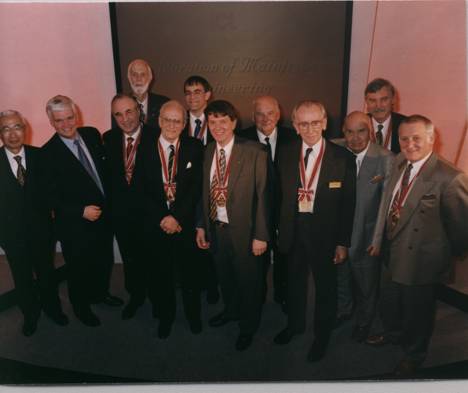The 1900 Range – Index
1-
1.1 -
1.2 -
1.3-
1.3.1 – System Architecture
1.3.2-
1.3.3-
1.3.4 – The 1900 Range Order Code
1.3.5 – FP6000 Processor Data Flow
1.3.6 -
1.4 -
2-
2.1-
2.2-
2-
2.4 ICT 1900 competitive position
3.1 – The FP 6000 Software (Before the 1900 Range)
3.2 -
3.3 – Programming Aids (Software) in 1966
3.4-
3.5-
3.6 ICT/ICL 1900 Software in 1972
4.1 – 1900 Road Map
4.2-
4.3– Customers list and Applications
4.3.1-
4.3.2-
5-

ICT (International Computers and Tabulators) on 28 September 1964 announced the 1900 Range of systems, giving great emphasis on program compatibility and portability between all models in the 1900 range (present and future) and modularity via the ICT Standard Interface (“Each 1900 system will grow with the customer’s needs by replacing individual modules as needed, without needing to replace the whole system”).
The 1900 continued to be marketed for ten years, and kept competitive and technologically up to date by continuous development, enhancement and replacement of its hardware and software modules.
The range was undoubtedly a success story for ICT and later ICL. While many people and groups contributed, its success owes a great deal to the skill and dedication of engineering teams throughout the company.
The strong engineering tradition so pervasive in the company was highlighted when, in November 1998, on the 50th Anniversary of ICL first computer, the Chairman of ICL awarded 8 Gold Medals for outstanding contribution to the development of ICL mainframe systems. A few of the 1900 designers were amongst the 8 Gold Medals
Mr. Naruto, ICL Chairman, with Keith Todd, Arthur Humphreys, Peter Hall and the 8 Gold Medals in November 1998. Charlie Portman, unable to be present, is receiving his gold medal by proxy.
This site was created in 2004, initially, as a complement to the CCS “Our Computer Heritage” project.
Key colleagues, actively involved in 1900 Range activities in the 1960’s, were asked to contribute and/or comment and validate material in their appropriate area, and/or provide input from their files. For a list of the main contributors see
1900 Acknowledgements and References and the beginning of Section 4.3.2.